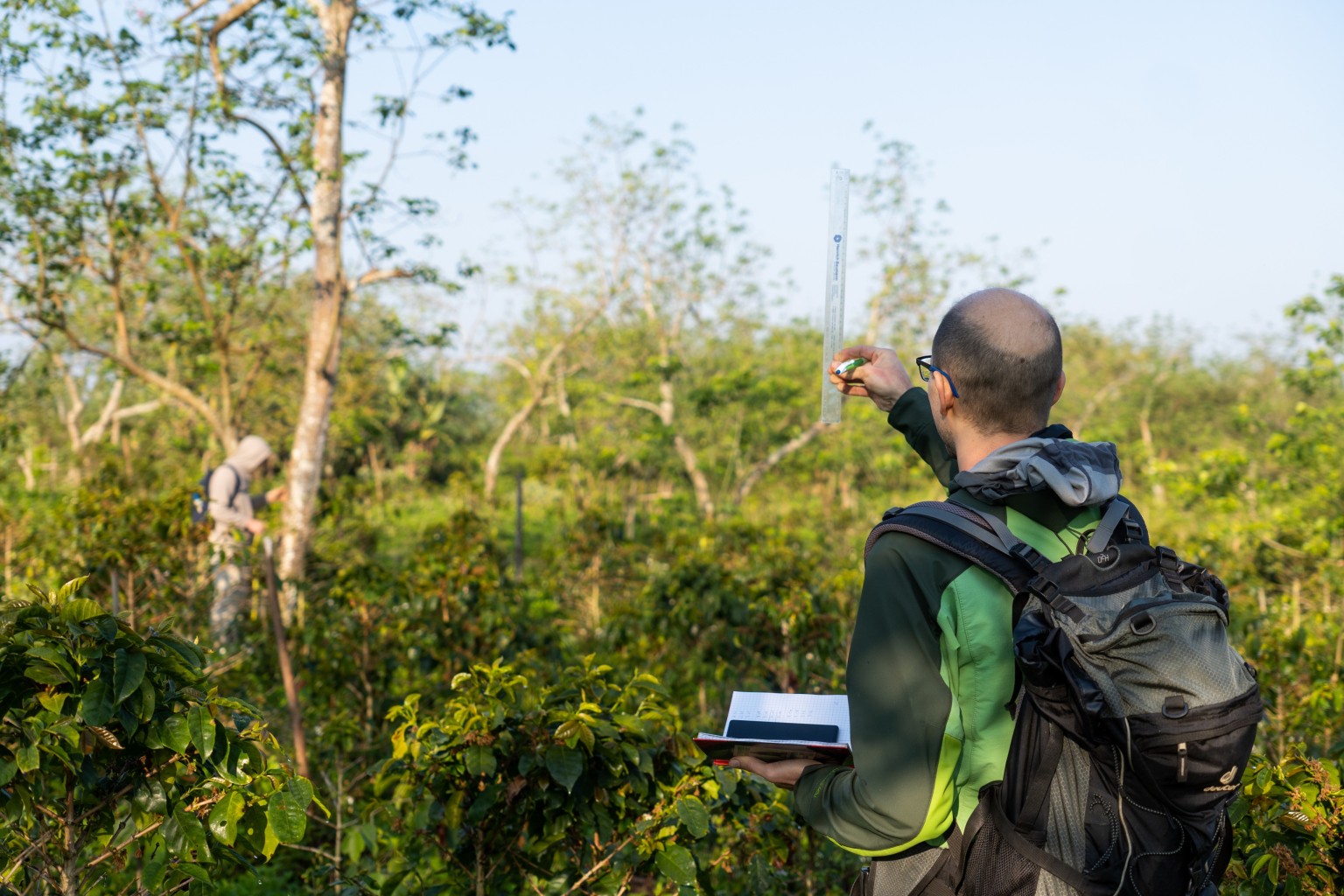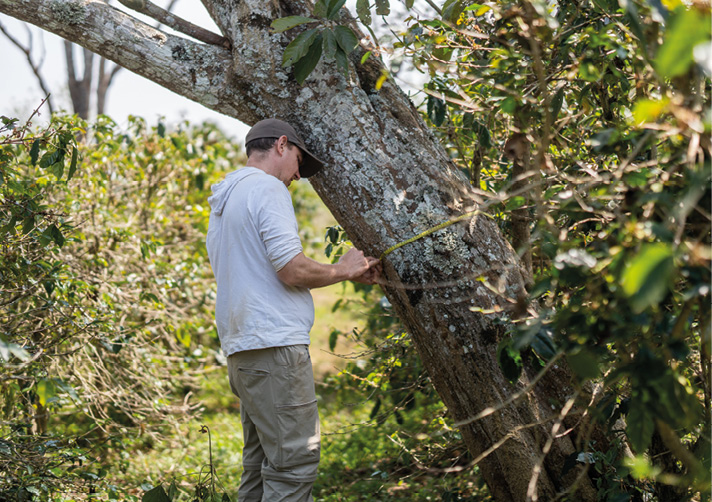Bildnachweis: The Landbanking Group.
In the era of an empty world, with seemingly infinite resources and a small humanity, we only valued nature as much as we could extract from it – being a functioning soil, water, biodiversity. And we haven‘t redefined its value since. Therefore, we attribute no economic value to nature, or one that is incomparable to the true extent of ecosystem services. Following this logic, investments in nature improvement and conservation make no business sense. But is that true?
.jpg)
In today‘s crowded world, with increasingly scarce resources, we recognize that nature is in need of investment as critical infrastructure. It must be maintained and expanded. Now that the effects of poor decisions on the issue of nature conservation have reached our own doorstep, the financial market has also noticed that the degradation of natural resources such as biodiversity, soil and water pose an acute threat to the ability of many companies to operate. This makes a commitment to improving and maintaining soil fertility, water holding capacity or biodiversity essential.
Breaking away from traditional perspectives
This summarizes numerous recent publications and discussions with representatives of companies and financial institutions. At the same time, chartered accountants recognize that we urgently need new tools that show investments in nature conservation and improvement as investments that increase company value according to recognized accounting standards. Today‘s monitoring approaches to sustainability activities do not meet these requirements. They serve another purpose – sustainability reporting. However, this does not address the structural problem that companies and society struggle with in the face of collapsing ecosystems: the non-recognition of nature conservation and improvement measures in product and capital markets. Companies that are committed to preserving and improving nature currently suffer a competitive disadvantage as they simply have a higher cost, called sustainability budget.
Nature needs a financial wake-up call
We need a new approach: conservation investments in soil, water or biodiversity must be able to be accounted for, financially, as these are investments into business continuity – in the short, medium and long term. According to expert opinions from chartered accountants, this dilemma can be solved. One way to make the economic value of investments in nature effective in the balance sheet under applicable accounting standards is to present them as intangible assets. In order to be recognized as an investment, nature conservation and improvement contracts with farmers, foresters or landscape managers must meet several criteria: The services must be identifiable, controllable, measurable and economically beneficial. Above all, this requires an independent, replicable measurement of success, for example a measurement of the absolute or relative improvement in water holding capacity. “Relative” improvement should play an important role, as maintaining an ecosystem service at a high level that has already been achieved must also be rewarded.

Recognizing nature investments on balance sheets
The combination of remote sensing, digital image and sound recognition, metagenomics and other methods, summarized as „ground truthing“ as well as machine learning opens up completely new possibilities. Simply through a multiplication of data sources (multiple sensors on an increasing number of satellites with higher overflight frequencies) and the exponential increase in computing power, the quality and scope of the available data has increased significantly in recent years and the costs for its use have fallen massively. Measurements and evaluations of biodiversity, soil quality, carbon and water can already be carried out with a temporal and spatial resolution that allow to generate outcome measurement, based performance contracts between farmers and entrepreneurs that meet the requirements of aa chartered accountant as the contractual basis to activate payments for ecosystem improvements as assets on the balance sheet.
Ground truthing and remote sensing
Based on this, as The Landbanking Group, in consultation with banks, companies and auditors, we have developed a remote sensing-supported solution backed by groundtruth data that documents the impact of payments for ecosystem services, investments into natural capital with regard to biodiversity, soil, climate and water in such a way that, according to the international accounting standard, these payments are no longer recorded as costs in the profit and loss account, but as intangible assets in the company‘s balance sheet. Companies are therefore increasingly motivated to invest in nature. Nature-preserving payments become an asset that can be biophysically valued, observed, contracted, transferred to buyers on the Landbanking platform and managed there by them in a nature capital management system.

As an example: if a mill financially supports a grain supplier for example with implementing cover crops as a means to improve the water holding capacity, and such an improvement is measured through our remote sensing monitoring system, the mill can record these additional expenses as an asset as it has thereby reduced its procurement risk in times of increasing drought periods.
Nature investments as credit catalyst
This asset strengthens the company‘s balance sheet, which, among other things, has a positive effect on creditworthiness. This is exactly what banks relevant to the food and agricultural sector currently evaluate as they face an increasing number of defaults as a result of the changing climate. The aim is to ensure that companies and farmers who invest in natural capital and resilience of agricultural systems through implementing regenerative farming practices receive better credit conditions. Quite a few pioneering, market leading companies and a number of participating banks and chartered accountants explore options on how to use such approaches to actually show that payments for nature conservation and improvement can be considered an asset instead of a cost, in order to accelerate the transformation to regenerative land-use at scale.
Unleashing ecological monetization
The same logic also applies to companies or investors who are committed to the ecological monetization of plots of land, not being part of their supply-chain. A paradigm shift can also be observed here. On the one hand, expectations and incentives for investing in natural land improvements are increasing within the framework of the EU taxonomy, national biodiversity markets (UK, Australia, New Zealand) or international nature-positive commitments. On the other hand, nature conservation measures are increasingly being carried out in a results-oriented manner on the basis of transparent monitoring. From donation to investment in verifiable conservation or improvement equivalents. From a regional project to a national park with millions of hectares.
Fostering regenerative agriculture
The aim is, that farmers or land managers receive more and adequate financial support to implement regenerative land use practices because investing into nature becomes financially attractive.
Autor/Autorin

Tobias Bandel
After studying agricultural sciences at the University of Hohenheim, Tobias Bandel managed the fruit and vegetable department at Sekem in Egypt for several years. In 2007, he co-founded and managed the sustainability consultancy Soil & More Impacts, specialising in agricultural consulting, climate strategy and true cost accounting. Since the takeover of Soil & More Impacts by Sustainable AG, he has been working for The Landbanking Group.





